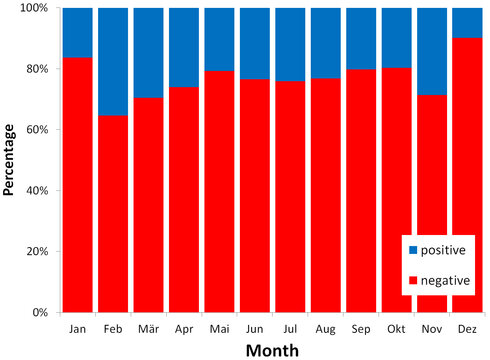Polarity of Lightning Current

The polarity of a lightning flash is assigned according to the polarity of the charge removed from the cloud during a lightning discharge. Visually, these two discharge types are indistinguishable for laymen.
In summer thunderstorms usually only a relatively small percentage of positive discharges is observed, varying from storm to storm in a range from 5 % to 20 %. However, in winter thunderstorms the percentage of positive discharges exceeds 50%. This trend is also evident from the average polarity distribution of 2010—2012. The percentage of positive lightning in the summer months May to August is about 20 %.
Video studies in the US have shown that a greater proportion of National Lightning Detection Network (NLDN ™) located small peak current positive cloud-to-ground lightning was actually misclassified as cloud-to-cloud lightning. For this reason, in the NLDN all positive flashes with amplitudes of less than 15 kA are classified as a cloud-cloud discharge, whereas in the ALDIS system this limit is 5 kA. This fact needs to be considered when comparing published statistics of polarity distribution of different lightning location systems.